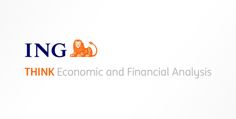Gold prices slid below $4,000/oz amid profit-taking on Gaza ceasefire
Oil prices are set to come under pressure due to a significant surplus next year, and European natural gas prices are also set to fall as new LNG export capacity ramps up
Further OPEC+ Supply Sees Oil Surplus Grow
Oil prices have been choppy over the past month, with Brent trading briefly above US$70/bbl on the back of geopolitical and sanction risks building in the market. But the move was short-lived, and the market came under renewed pressure following growing noise that OPEC+ will bring further supply onto the market more aggressively than anticipated.
However, with the market already set to move into a large surplus from the fourth quarter of this year and remain there throughout 2026, we do not believe that additional supply from OPEC+ is needed. This gives us growing confidence in our view that oil prices will move lower next year, and we’re maintaining our forecast of Brent averaging US$57/bbl.
OPEC+’s recent actions indicate the group remains focused on reclaiming market share. With fiscal breakeven oil prices significantly above current levels, the sustainability of this strategy is likely to come under greater scrutiny in 2026.
There are clear upside risks to the oil market, with the most prominent being the ongoing threat of sanctions and secondary tariffs targeting Russia. Currently, only India faces secondary tariffs for its purchases of Russian oil. However, a more aggressive stance from President Trump could place broader Russian supply at risk.
Another key upside risk also stems from Russia on the supply side, specifically the potential for disruptions caused by Ukrainian drone attacks on Russian energy infrastructure. While most of these attacks have focused on refineries, there have been instances targeting port infrastructure, which could directly impact crude oil exports.
Weak Asian LNG Demand Takes Pressure Off European Gas Prices
European gas prices have remained largely under pressure. TTF continues to trade in the low EUR 30s despite Europe moving closer towards the 25/26 heating season. A recovery in Norwegian gas flows following the end of scheduled maintenance would have helped ease any supply concerns. In addition, Asian LNG demand, particularly from China, remains weak, which has helped ensure adequate supply for Europe as we approach the heating season.
EU gas storage ended September at more than 83% full, and with storage targets for the EU now more flexible, we should not expect upward pressure from buying to ensure the 90% storage target is met by 1 November. Ultimately, the outlook for natural gas prices through the winter is going to largely depend, of course, on the weather.
We expect European natural gas prices to trend lower through 2026 and particularly through 2027. The start-up of significant LNG export capacity should ensure that the market becomes increasingly well supplied.
The ramp-up of new additional LNG export capacity should also make it possible for the EU to go ahead with its plan to phase out Russian gas, without putting significant upward pressure on prices.
***
Disclaimer: This publication has been prepared by ING solely for information purposes irrespective of a particular user’s means, financial situation or investment objectives. The information does not constitute investment recommendation, and nor is it investment, legal or tax advice or an offer or solicitation to purchase or sell any financial instrument. Read more
